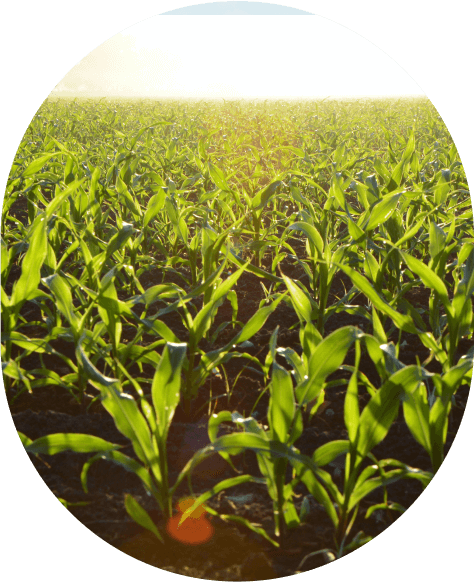Download the report
Legal Disclaimer
© 2023. Delta Air Lines, Inc.



Environment
Sustainable Aviation Fuel
SAF is a liquid hydrocarbon fuel synthetically produced using renewable or waste-derived feedstock. It will play a key role in aviation’s decarbonization pathway but is currently unavailable at scale or price parity with conventional jet fuel.
What Is Sustainable Aviation Fuel?
SAF is an alternative jet fuel that achieves lower life cycle GHG emissions compared to conventional jet fuel using various feedstocks such as used cooking oil, cellulosic waste and municipal solid waste. Approved conversion processes produce SAF, such as Fischer-Tropsch, HEFA (hydroprocessed esters and fatty acids) and co-processing. We do not procure or accept
SAF made from palm oil or PFAD (palm fatty acid distillate).
- In the context of the Carbon Offsetting and Reduction Scheme for International Aviation (CORSIA), the International Civil Aviation Organization (ICAO) developed SAF sustainability requirements that include minimum emissions reductions, land use and food security considerations, among other factors. SAF must meet these requirements to be eligible for compliance with CORSIA.
- ICAO has approved two entities, the International Sustainability and Carbon Certification (ISCC) and Roundtable of Sustainable Biomaterials (RSB) to certify the sustainability of SAF.
For the aviation industry to achieve net-zero by 2050, an exponential increase to 330–445 billion gallons of SAF per year by 2050 could be required.1
Critical building blocks for scaling SAF include:
Government Incentives:
Performance-based, as well as feedstock- and technology-neutral incentives are required to help drive investment toward the development of SAF at a reasonable cost. For example, at the federal level, a 10-year SAF-specific Blenders Tax Credit coupled with a dedicated grant program are some of the policy supports necessary to help catalyze the domestic market. Additionally, at the state level, incentives and programs such as California’s Low Carbon Fuel Standard’s voluntary opt-in program for SAF need to be more widely adopted to bring SAF to other geographic locations economically. As international governments seek to drive investment in SAF, we caution that mandates without incentives will fail to ensure sufficient supply and reasonable pricing.
1 According to the Air Transport Action Group (ATAG), an independent coalition providing a platform for the commercial aviation sector to collaborate on long-term sustainability issues.
SAF Accounting Framework:
One of the benefits of SAF is that it can be delivered and stored as a “drop-in fuel” using existing pipelines and storage infrastructure. However, an effective book-and-claim framework will be necessary from a carbon accounting perspective because SAF comingles with conventional jet fuel.
Current feedstock and technologies can produce SAF with up to 80% lower life cycle emissions than conventional jet fuel, with the ability to blend with conventional jet fuel at up to 50%.
Delta aims to procure more than 400 million gallons of SAF annually in an effort to achieve a goal of 10% SAF utilization by the end of 2030. In 2022, we signed offtake agreements with Gevo and DG fuels, bringing our procured 2030 SAF gallons to 200M. We continue to purchase from and align with leaders in the SAF industry to accelerate our yearly procurement. We have negotiated offtake arrangements for future SAF supply with these suppliers:
Gevo: 75 million gallons annually produced by using industrial field corn
Aemetis: 10 million gallons annually produced by utilizing used cooking oil and tallow as feedstock
DG Fuels: 55 million gallons annually produced by using timber waste
NWAB: 60 million gallons annually produced by utilizing slash, forest residues and mill residues
Delivery of this fuel is subject to timely third-party investment and facility development. These agreements expand availability of this nascent technology and align with Delta’s SAF goal as a founding member of the First Movers Coalition.
In 2022, Delta procured 1.6 million gallons of SAF, a 329% increase compared to 2021.
Delta is also working closely with customers to increase demand for SAF and help address the significant price premiums. Many of Delta’s corporate customers are motivated by the aggressive Scope 3 targets they have set for their commercial business travel and cargo emissions. In 2022, Delta had agreements with 30 corporate customers, travel agencies and freight forwarders to help fund and apply SAF toward GHG emissions from their business travel and cargo shipped on Delta.
Over the long term, a shift to next-generation SAF, such as power-to-liquid fuels and the ability to blend at more than 50% SAF is necessary for long-term efficiencies. Achieving these SAF goals will require working with manufacturers and fuel providers on regulatory approvals and significant investments in renewable electricity. These fuels, coupled with the use of direct air capture of carbon at the SAF production facilities, have the potential to achieve life cycle emissions reductions beyond the 80% maximum estimated today.
Current SAF Offtake
Current SAF Offtake
1.6M gallons
of SAF delivered
15,589 mT
of CO2e avoided
Used primarily at 5 airports:
LAX, SFO, CDG, LHR, AMS
Life Cycle Emissions of Fuel
From Well-to-Wake
Life cycle emissions account for the GHG emissions at every stage of the fuel’s life – from development and production to its ultimate use. We have reported “tank-to-wake” combustion emissions since 2005 as part of our greenhouse gas emissions inventory. Sustainable aviation fuel emissions are reported on a full life cycle “well-to-wake” basis to demonstrate the emissions reductions. Beginning in 2021, and again in 2022, our GHG emissions data includes “well-to-wake” fuel emissions to increase transparency and follow SBTi guidance.
Life cycle emissions from SAF can currently be up to 80% lower than conventional jet fuel because the feedstock production either absorbs carbon dioxide in the atmosphere or avoids generating GHG emissions associated with the disposal and decomposition of the feedstock as a waste. For bio-based feedstocks, the analysis also considers the potential GHG emissions increases from Indirect Land Use Changes (ILUC) and Life Cycle Assessment (LCA).








